
In this second installment of a four-part series focused on forest carbon and supported by the Virginia Wellington Cabot Foundation, forest ecologist and tree physiologist Alexandra Kosiba provides an overview of forest soil’s role in carbon storage, and describes management techniques to protect soil as part of managing forests for climate change mitigation goals.
Kosiba, a licensed Vermont forester, is an assistant professor of forestry and a forestry specialist at the University of Vermont Extension. She previously served as climate forester for the Vermont Department of Forests, Parks and Recreation. She leads the Vermont Forest Carbon Inventory project and also provides educational presentations for the Securing Northeast Forest Carbon Program, a federally funded collaboration among state foresters in New England and New York. To learn more about the program, go to northeastforestcarbon.org. Read the first installment in the Forest Carbon series.
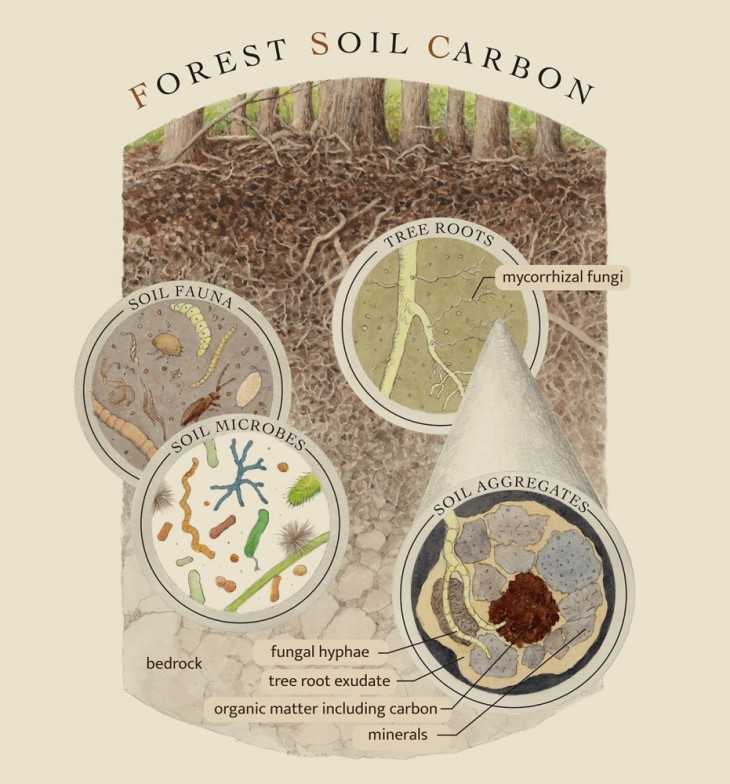
Click here to download a PDF of this article.
Illustrations by Erick Ingraham.
Why are forest soils important?
Walking through a forest, it’s easy to overlook the soil. But forest soils provide a vital space for roots, nutrient cycling, and water storage, and are home to a biodiverse suite of organisms collectively known as the soil biota. Soil biota include microbes such as bacteria, fungi, protists (amoebae), and viruses, as well as larger soil fauna such as earthworms, snails, slugs, spiders, millipedes, nematodes, and mites. Soil biota provide vital functions in breaking down and decomposing organic matter. Without them, dead matter would accumulate and nutrients would be inaccessible.
Recently, soils have gained attention because they are a critical component of the global carbon cycle and play a major role in regulating Earth’s climate. Globally, soils store four times more carbon than all aboveground plant biomass combined, making them the largest land-based carbon pool on Earth. Another notable feature of soils is that they can store carbon for a long time, in some cases over millennia. As discussed in the first article in this series, more than half of the carbon found in the forests of the Northeast is stored in the soil. Given the vast size of the soil carbon pool, any changes to it can significantly impact atmospheric carbon dioxide (CO2) concentrations. Therefore, understanding whether forest soils gain or lose carbon over time is critical to understanding Earth’s future carbon balance, and to managing forests to mitigate climate change.
How does carbon get stored in soil?
Soil carbon originates from two sources: inorganic carbon and organic carbon. Inorganic carbon forms from the weathering of rocks or from soil minerals reacting with CO2, while organic carbon arises from the remains and wastes of living organisms. Inorganic carbon in the soil occurs largely as carbonate minerals, such as calcite and dolomite. In arid regions with sparse vegetation, inorganic carbon is more abundant in the soil than organic carbon. But in our humid forests of the Northeast, carbonates are quickly dissolved by rain. Here, organic carbon is the primary type of soil carbon. Organic carbon arises from dead organic matter on the forest floor and from roots and microbes in the soil.
When leaves and bark are shed, twigs break, and organisms die, the soil microbes begin to break down the organic matter into smaller and smaller pieces that can then be consumed and excreted by soil fauna such as earthworms, millipedes, and snails. Evidence of this decomposition is easy to find beneath the leaf litter. What you’re likely to see is a layer of dark soil, comprised of indistinguishable particles of plant and animal matter. As the soil biota continue to consume organic matter, carbon compounds are transported to deeper soil depths. When the soil biota die, they, too, contribute to the organic carbon pool.
Tree roots and their associated mycorrhizal fungi add a significant amount of organic carbon directly to the soil. This happens through the frequent turnover and decomposition of small feeder roots as well as through exudations of carbon compounds by living roots and associated mycorrhizal fungi. These exudations produced by roots and mycorrhizal fungi, as well as by bacteria that live in the soil, play an important role in stabilizing the soil carbon pool. This sugary mucous facilitates clumping, or aggregation, of soil particles, which reduces carbon losses from erosion, leaching, and decomposition.
How is carbon lost from the soil?
Carbon can be lost through physical or chemical means. Physical loss occurs when water, wind, or other erosive forces carry soil, carbon, and other nutrients offsite. A historical example of this loss was the rapid erosion of topsoil from northeastern hill farms in the 19th century during a period of mass conversion of forests into pasture. The widespread removal of trees altered water patterns and reduced soil stability, resulting in losses of soil carbon from the landscape during wind and rain events.
Chemical loss of soil carbon results from combustion of organic matter during a forest fire or from the metabolic processes of the soil biota, which we call respiration. As soil organisms break down and consume organic matter, they respire carbon gas back into the atmosphere. Most respiration is in the form of CO2, but when oxygen levels are low in the soil, which occurs when the soil is saturated with water, the soil organisms will emit methane (CH4), a potent greenhouse gas. Living roots also release CO2 into the soil during metabolic processes associated with maintenance and growth. Collectively, release of carbon gas through the metabolism of living microbes, fauna, and roots is called soil respiration. It’s important to note that it is the living organisms in the soil that are respiring, not the soil itself.
What factors affect how much carbon forest soils can store?
As with the other forest carbon pools, carbon in the soil is dynamic. On an ongoing basis, there are both carbon inputs and losses. Many factors impact the balance of these inputs and losses, including soil texture, site conditions, and vegetation. The most important factors in determining the stability and longevity of organic carbon in the soil depends on microbial processing and mineral associations. Organic carbon can exist as particles of plants and animals in different stages of decay, dissolved in water, or chemically bound to soil minerals. This last form of organic carbon is the most stable and can persist in the soil for centuries or even millennia. Some soil types, such as clay soils, can bind a large amount of carbon, whereas sandy soils cannot. Across all soil types, the deeper in the soil the carbon is stored, typically the longer it can remain.
We also see differences in soil carbon by forest type. Softwood (evergreen conifer) forests tend to accumulate more organic carbon in the forest floor and topsoil layer compared to hardwood (deciduous broadleaf) forests. This is because conifer needles have a waxy coating and high acidity that resists decomposition by soil microbes. In contrast, hardwood leaves decompose much more rapidly and as a result, carbon is transported deeper in the soil.
Site conditions, such as the height of the water table and the climate, also affect soil carbon. Soils that have high water tables can store large amounts of carbon because the lack of oxygen slows decomposition. For this reason, peat bogs store the highest amounts of soil carbon of any terrestrial ecosystem. A bog’s high water table results in sphagnum moss and other organic matter accumulating at a faster rate than they can be decomposed. Similarly, below freezing temperatures restrict decomposition. In the Northeast, soil respiration and decomposition increase in the spring when soils warm, and decrease in the fall when soils cool. Over time, the amount of carbon added to northeastern forest soil exceeds the amount lost through decomposition and respiration. By contrast, tropical climates tend to have lower amounts of organic soil carbon on the forest floor because decomposition and respiration occur year-round.
What are the impacts of timber harvests on soil carbon?
In the short term, a timber harvest often, but not always, reduces soil carbon. The magnitude of losses and recovery time depend on the harvesting intensity and physical impacts to the soil, along with the characteristics of the soil and the site. Clearcutting tends to result in greater losses of soil carbon than stand thinning. Partial harvests with areas of retention may have short-lived or undetectable declines in soil carbon. Carbon outcomes associated with timber harvests strongly depend on soil type: sandy soils exhibit greater reductions than clay soils.
As long as best management practices are followed, carbon losses post-harvest are usually larger in the forest floor and upper portion of the soil, and less detectable deeper in the soil profile. This is because deeper soil horizons are not disturbed, and carbon tends to be more stable if it is deeper in the soil. The reduction in soil carbon after a timber harvest primarily results from a temporary loss of organic matter inputs because of a reduction in fine root turnover, aboveground litter, and root exudates. Soil carbon stocks may also decline after a timber harvest due to higher rates of decomposition that are stimulated by the removal of the tree canopy, resulting in more sunlight reaching the forest floor and therefore warming the soil. Usually, the warmer soil conditions will increase the activity of the soil biota. Generally, the more trees that are removed, the larger the reduction in organic matter inputs post-harvest. Without a continued replenishment of organic matter to feed the soil community, there will be a gradual reduction in soil biota and carbon. Managing the stand to encourage the establishment of new trees, as well as leaving some trees on site, can provide inputs of organic matter that feed the soil biota and replenish carbon.
Aside from tree removal, soil carbon losses also occur if machinery or vehicles cause soil rutting and compaction, which can degrade the soil structure and cause erosion. Wet soils are more prone to rutting and compaction than dry or frozen soils. In addition, where soils are compacted, oxygen contained in the soil pores is pushed out. In low oxygen conditions, soil microbes produce methane instead of CO2. Elevated emissions of methane are worrisome because methane has much greater warming potential in the atmosphere as compared to CO2. Severe impacts to the soil can also reduce the soil’s ability to sequester carbon in the future. For example, compacted or heavily disturbed soils may constrain future plant growth by restricting roots or limiting nutrient and water availability.
How will continued climate change affect soil carbon?
The impact of climate change on forest soil carbon is uncertain. Warming may accelerate decomposition and soil respiration rates, leading to significant losses of soil carbon as is occurring in the Arctic where permafrost is thawing. Heavy rainfall events caused by a warmer atmosphere could increase soil erosion. Higher water tables could also increase methane emissions if soils are saturated for longer periods of time. Climate change may also influence tree growth and health, which in turn could influence live root exudates, root turnover, and organic matter inputs. Scientists project that over time, the effects of climate change are likely to alter the distribution and composition of vegetation, which may result in changes in the amount of carbon stored in the soil. And we may see more incidents of wildfire that result in emissions of stored carbon. While the impact of climate change on soil carbon is complex and context-dependent, because forest soils store a lot of carbon, they should be protected.
How can we manage soil carbon?
To prevent soil carbon losses, forest managers and landowners should seek to minimize disturbances caused by water runoff, equipment, vehicles, tilling, and excavation. Maintaining vegetation adjacent to wetlands, seeps, streams, vernal pools, and other water bodies can reduce soil erosion from water runoff. Water diversion structures on roads and trails, such as dips and water bars, help to minimize erosion and keep water on site by redirecting water into depressions where it can be slowly absorbed by the soil.
Strategies to reduce soil carbon losses also include laying out roads and trails to avoid steep slopes and to allow for their future reuse to concentrate impacts. Restricting equipment and vehicle use to times when the soils are frozen or dry, avoiding wet soils, and using structures such as bridges, corduroys, or branches spread across the traveled surface will reduce soil rutting and compaction. Because soil disturbance intensity is directly proportional to soil carbon reduction, disturbances should be limited to as small an area as possible.
However, in some cases, strategic soil disturbance may be beneficial. One example is soil scarification, which involves removing the leaf litter and exposing the mineral soil to promote regeneration of tree species that require these conditions to establish. Scarification will result in temporary soil carbon losses, but if it promotes successful tree regeneration that would not have occurred otherwise, this may be worthwhile. In a short time, the newly established trees should compensate for the prior carbon losses.
Beyond avoiding soil carbon loss, landowners and managers can help promote soil carbon through several strategies, all of which have additional ecological benefits. In a timber harvest, consider leaving some branches and treetops from harvested trees in the woods as a source of organic matter to sustain the soil biota. Dead logs on the forest floor retain water, prevent erosion, and provide a source of decaying organic matter and habitat for invertebrates and microbes that contribute to the soil carbon pool.
Forest management strategies that increase species diversity and forest structural complexity can support additional soil carbon storage. Forests with more species, particularly stands with both deciduous and conifer species, and those with greater variability in the vertical and horizontal structure, tend to contain more soil carbon. One tactic is to retain clumps of trees or individual trees scattered throughout the harvested area as a continued source of belowground carbon and to maintain mycorrhizal fungi and other soil biota that rely on living root systems. Management strategies that promote adaptation to climate change, such as encouraging tree species better adapted to a future climate, can allow for long-term carbon inputs.
Finally, keep in mind that the greatest and most enduring threat of soil carbon loss is the conversion of forestland to different land uses, especially when this conversion includes the excavation of soil for development. When physically disturbed by human activities that occur during land-use change, forest soils can become a significant source of both CO2 and methane emissions. Keeping forests as forests is the best way to preserve soil carbon and the biotic community. Allowing once-forested areas to re-grow as forests, or planting new trees in yards, farms, or along streets, will increase carbon both above and below the ground.
A key point to remember is that soil carbon can be lost relatively quickly if disturbed, yet it takes a long time to rebuild. In addition to preventing carbon emissions, maintaining soil carbon storage has numerous benefits, including increased nutrient availability, water-holding capacity, biodiversity, and forest productivity.


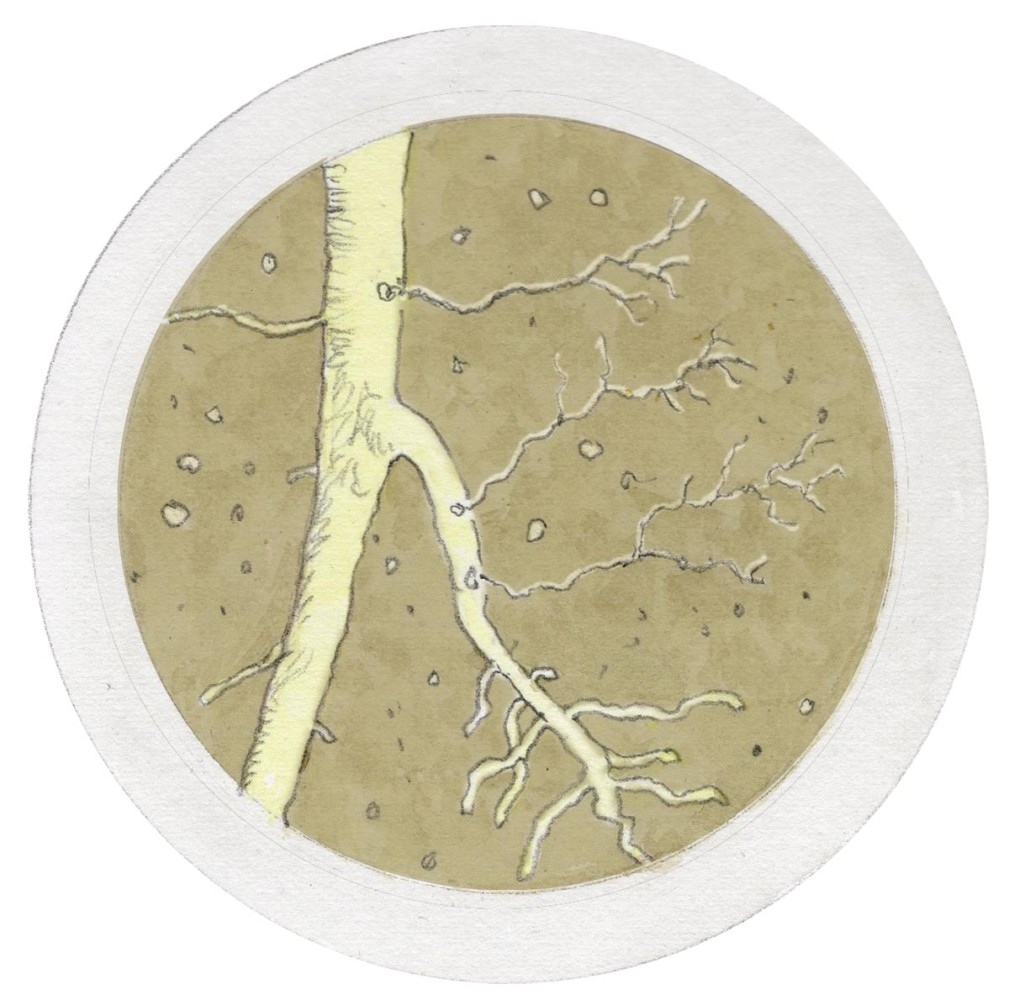
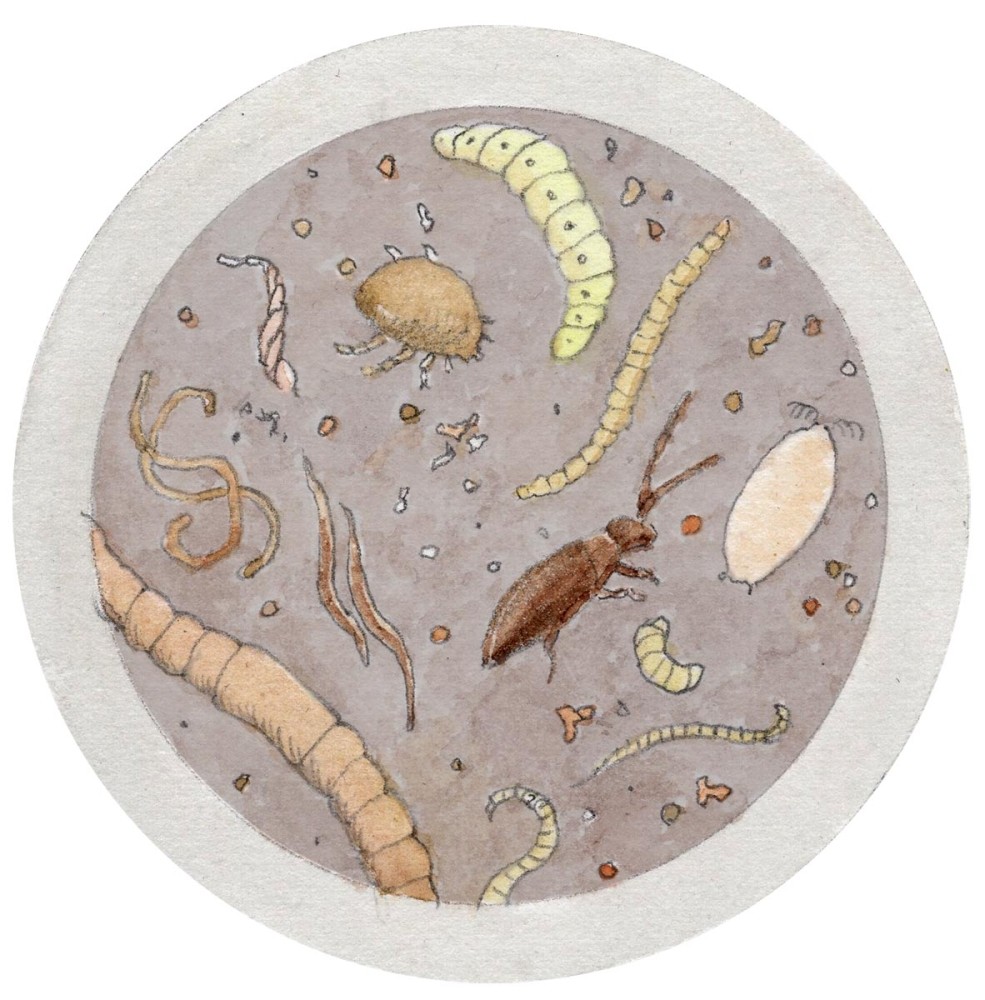

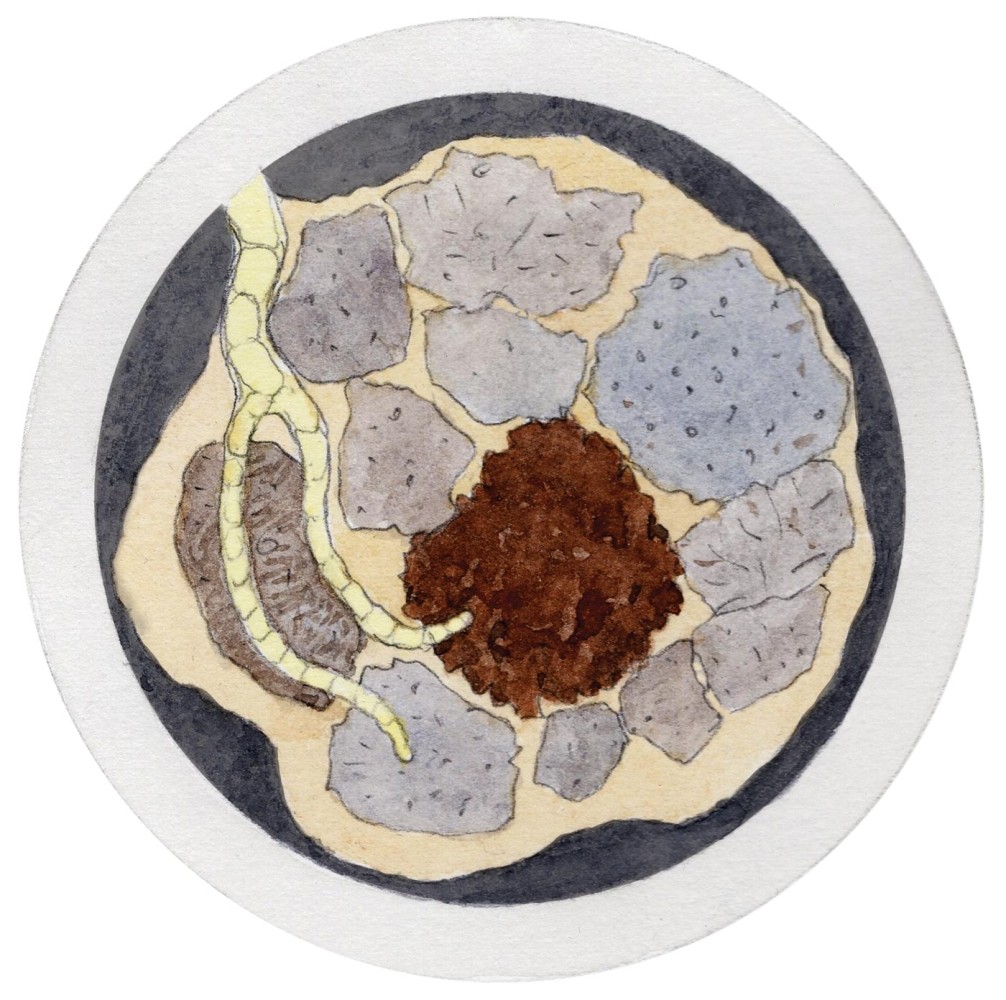
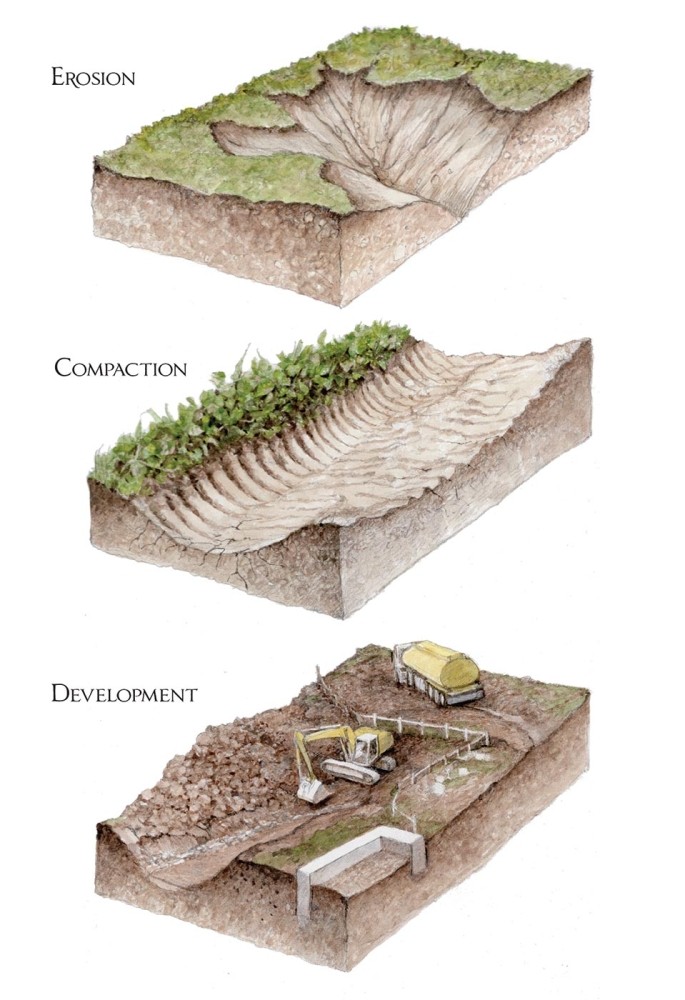
Discussion *